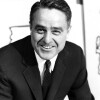“We need to involve the grass roots leadership of the poor, to develop more leaders, and organizations capable of representing the poor, of speaking out on their behalf, of participating in the planning and administration of Community Action programs. And—we need those neighborhood leaders to criticize our programs, to make sure our programs are getting at the real needs of the poor.”
Our Quote of the Week encapsulates the importance of Community Action as a concept and as a program of the War on Poverty. It reminds us that at a fundamental level, expanding economic opportunity must involve the empowerment and self-determination of all people. As we mark Community Action month in May, we celebrate this vision of a dynamic community that has the resources and opportunities to build itself up on its own terms.
During the1964 Address at the Community Action Assembly Sponsored by the National Urban League, Sargent Shriver speaks about the important connection between civil rights to the War on Poverty. He says:
“There is an urgency about the dignity of man. There is a compulsion to act—to act here and now— to free men from bondage—whether it be the bondage of discrimination or the bondage of poverty.”
He goes on to speak of the vital importance of the Civil Rights Act to Black Americans, and says that laws alone are not enough, that economic resources—training, jobs, education—must also be available. In this context, he emphasizes the importance of Community Action, which allows for “grass roots leadership” in communities that are struggling economically.
Initially a concept that emphasized local service to empower individuals and families dealing with economic hardship, Community Action was central both for the War on Poverty and for Sargent Shriver, who believed that to truly empower people, you had to do so on their terms, not according to a cookie-cutter definition of success or prosperity.
An idea from the Kennedy administration, the notion of “community action,” i.e., of creating small, local projects managed largely by community members, for community members, solicited both excitement and trepidation in President Johnson and others involved in the War on Poverty strategy. For men who were accustomed to wielding power, the idea of yielding authority to local groups seemed bold, but also intimidating. When Sargent Shriver came on the scene to lead the War on Poverty, he embraced the notion of “community action” and was a proponent of setting up local agencies that would focus on the specific and varied needs of the economically disadvantaged. After all, he had set up a similar model in the Peace Corps, in which volunteers would immerse themselves in the culture of a country and embed themselves in a community so that they could serve its members in ways that were most beneficial for them. These programs would invite, according to terminology established early on, “maximum feasible participation,” i.e., involvement of all individuals and groups in local communities who had direct experience with poverty and who wanted to work on alleviating it for themselves and for their neighbors. The programs varied from community to community, but generally revolved around the following areas:
- preparing people for employment through training and education;
- imparting financial literacy and tax expertise;
- teaching people to advocate for themselves;
- supporting families with young children through education and child care;
- helping people stay safe and warm in affordable housing with functioning electricity and heating.
It’s notable that in speaking about Community Action, Sargent Shriver welcomes criticism from community members as part of what he envisions for the program. His openness to criticism shows a leadership quality that continues to be valuable today: the willingness to listen, to learn, and to adopt solutions that truly benefit those for whom those solutions were designed.
The degrees of success of local Community Action agencies varied from place to place, and the programs, with their model of empowering local citizens, caused controversy in some jurisdictions. But the overall success of Community Action is undeniable, as over 1,000 Community Action agencies continue to serve residents in neighborhoods all around the United States.
Today, Community Action’s federal funding is administered by the Office of Community of Community Services (OCS), a part of the Department of Health and Human Services (HHS). The Trump administration’s budget proposal aims to slash the HHS budget, putting Community Action and other crucial programs like Head Start at risk. The proposal to decimate this and other departments that oversee social programs whose very goal is expand economic opportunity and empowerment in low-income communities is not, as the administration claims, a simple cost-saving measure that would benefit Americans. It is quite the opposite: it is a way to remove options and resources from communities who can least afford it, in order to benefit the wealthiest Americans through tax cuts.
As we move forward, may we embrace Sargent Shriver’s vision of “community action” in its fullness: as a way to inject all of our communities with dynamism through opportunity and self-determination for their people. And may we fight to protect the programs that uphold this legacy.
Like this quote? Read the speech and subscribe to receive our Quote of the Week by email.

